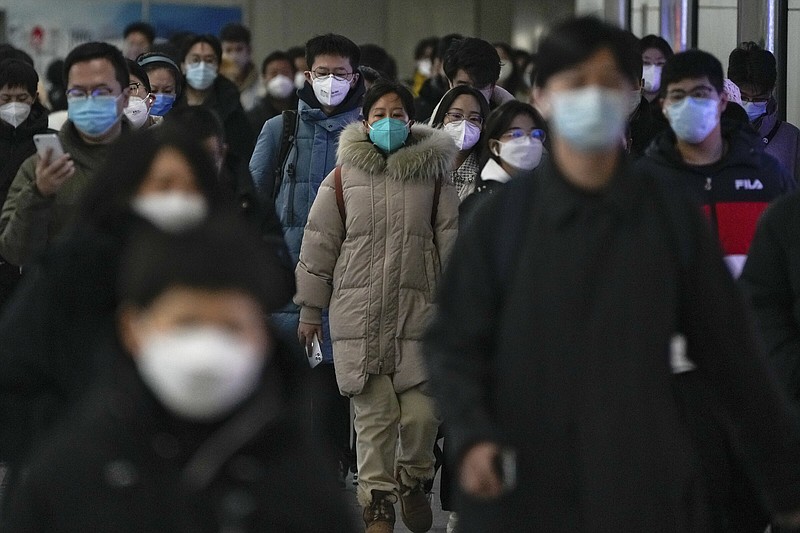BEIJING -- Several local governments in China encouraged people with mild cases of covid-19 to go to work this week, as its rollback of virus-containment measures set off a wave of infections and a growing number of deaths.
Health authorities reported Tuesday that five people died in the latest 24-hour period, all in Beijing, fueling concern that the toll could rise sharply after the lifting of most "zero-covid" restrictions. The official toll likely understates the actual number, and it's unclear how the unleashing of the virus will play out in China and whether the health care system can handle a surge in cases nationwide.
The city of Guiyang in southern Guizhou province proposed that infected people with little or no symptoms go to work in a range of sectors, including government offices, state-owned companies, medical, health and emergency workers and those in express delivery and supermarkets.
China had long hailed its restrictive "zero-covid" approach of lockdowns, quarantines and compulsory testing as keeping case numbers and deaths relatively low. Yet the policy placed China's society and the national economy under enormous stress and prompted rare anti-government protests.
Now, unofficial reports suggest a widespread wave of new coronavirus cases, and relatives of victims and people who work in the funeral business have said deaths tied to covid-19 are increasing.
Wang Guangfa, a doctor in the Respiratory Department of Peking University First Hospital, warned Beijing will see the peak of severe cases in the next one or two weeks.
"The current wave of infection resembles an epidemic tsunami," he said in a Q&A piece published online this week.
As is typical, cases of severe illness and death will be largely concentrated among the elderly or those who haven't received booster shots, said Dr. Gagandeep Kang, who studies viruses at the Christian Medical College in Vellore, India.
China, despite fully vaccinating 90.3% of its population, has only given a booster dose to 60.5%. China needs to prioritize giving boosters, especially to those over 60, to avoid large numbers of deaths, Kang said.
The National Health Commission said the five newly recorded fatalities had taken the country's total death toll to 5,242.
With people now testing and recuperating at home, China has said it is no longer possible to keep an accurate count of new case numbers.
China is trying to persuade reluctant seniors and others at risk to get vaccinated, apparently with only moderate success. Vaccination centers visited over recent days have been largely empty and there has been no major publicity drive in the entirely state-controlled media.
The other major concern is shoring up health resources in smaller cities and the vast rural hinterland ahead of January's Lunar New Year travel rush, which will see migrant workers returning to their hometowns.
Numbers of fever clinics have been expanded in both urban and rural areas and people have been asked to stay home unless seriously ill to preserve resources. Hospitals are also running short on staff, and reports say workers have been asked to return to their posts as long as they aren't feverish.
Information for this article was contributed by Olivia Zhang, Aniruddha Ghosal and Huizhong Wu of The Associated Press.
